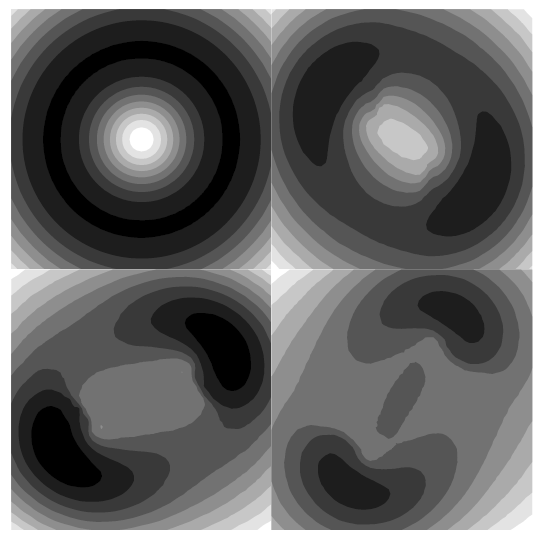Black Holes Break Up During Star Collapse, Say Astrophysicists
The latest simulations show that black holes can fragment into several pieces during a supernova, say astrophysicists
Black holes form when the gravitational field in a region of space is strong enough to prevent light escaping. The best known examples occur when stars run out of fuel and can no longer generate the heat needed to support their mass. If the star is big enough, the resultant collapse generates gravitational fields so strong that nothing can escape.
But how exactly does such a collapse occur? The conventional view is that the collapse occurs symmetrically, like a shrinking balloon. But that’s really only because this is the simplest situation to explore mathematically. Include any small perturbations in the calculations that change the symmetry and the mathematics of general relativity immediately becomes unmanageable.
Unless you have a supercomputer to help. Fortunately, this kind of computing power is becoming more common and Burkhard Zink at Max Planck Institute for Astrophysics in Garching and a few buddies have put it to good use.
They’ve simulated what happens to a collapsing, rotating star which is radially oscillating like a bell. That’s a reasonable enough scenario for a collapsing star in the real universe.
Astrophysicists have long known that such a star immediately becomes unstable but exactly what happens to it has eluded them.
With the help of some useful astrophysical computing code called Cactus, Zink and pals have found out. They say the star breaks into two or more self-gravitating parts that each develop their own event horizons. In other words, the star fragments into several black holes as it collapses.
What’s interesting about this is that the black hole fragments begin to spiral in towards each other and this ought to generate a unique gravitational wave signature that the next generation of detectors may well be able to pick up.
But how exactly does such a collapse occur? The conventional view is that the collapse occurs symmetrically, like a shrinking balloon. But that’s really only because this is the simplest situation to explore mathematically. Include any small perturbations in the calculations that change the symmetry and the mathematics of general relativity immediately becomes unmanageable.
Unless you have a supercomputer to help. Fortunately, this kind of computing power is becoming more common and Burkhard Zink at Max Planck Institute for Astrophysics in Garching and a few buddies have put it to good use.
They’ve simulated what happens to a collapsing, rotating star which is radially oscillating like a bell. That’s a reasonable enough scenario for a collapsing star in the real universe.
Astrophysicists have long known that such a star immediately becomes unstable but exactly what happens to it has eluded them.
With the help of some useful astrophysical computing code called Cactus, Zink and pals have found out. They say the star breaks into two or more self-gravitating parts that each develop their own event horizons. In other words, the star fragments into several black holes as it collapses.
What’s interesting about this is that the black hole fragments begin to spiral in towards each other and this ought to generate a unique gravitational wave signature that the next generation of detectors may well be able to pick up.

So we may find out sooner rather than later whether these guys are right.
Ref: arxiv.org/abs/gr-qc/0501080: Black Hole Formation Through Fragmentation Of Toroidal Polytropes
Keep Reading
Most Popular
Large language models can do jaw-dropping things. But nobody knows exactly why.
And that's a problem. Figuring it out is one of the biggest scientific puzzles of our time and a crucial step towards controlling more powerful future models.
How scientists traced a mysterious covid case back to six toilets
When wastewater surveillance turns into a hunt for a single infected individual, the ethics get tricky.
The problem with plug-in hybrids? Their drivers.
Plug-in hybrids are often sold as a transition to EVs, but new data from Europe shows we’re still underestimating the emissions they produce.
Stay connected
Get the latest updates from
MIT Technology Review
Discover special offers, top stories, upcoming events, and more.